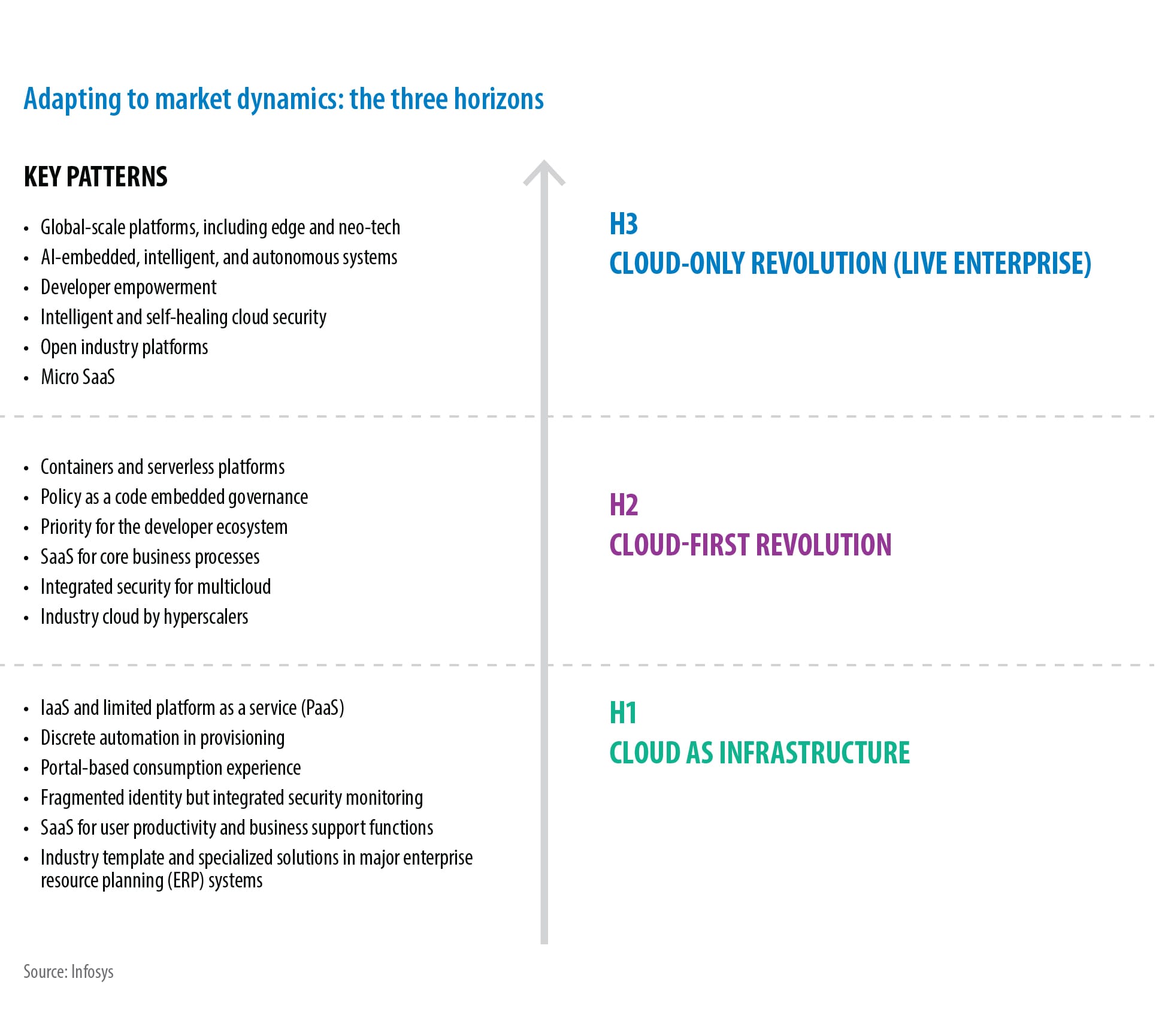Cloud
Cloud-native technologies helped businesses smoothly navigate the pandemic with speed, agility, and innovation. Cloud has become the key to developing solutions quickly and at scale. Growing demand for immersive experiences, responsiveness, and intelligent decisioning at the point of consumption extends the cloud continuum to the edge.
H3
CLOUD-ONLY REVOLUTION (LIVE ENTERPRISE)
Key Patterns
- Global-scale platforms, including edge and neo-tech
- AI-embedded, intelligent, and autonomous systems
- Developer empowerment
- Intelligent and self-healing cloud security
- Open industry platforms
- Micro SaaS
H2
CLOUD-FIRST REVOLUTION
H1
CLOUD AS INFRASTRUCTURE
Key trends across cloud subdomains
Trend 1
Container offerings evolve to build enterprise-ready solutions
Using containers for building scalable and portable microservices has become the de facto standard across all digital platforms. Kubernetes emerged as a standard for orchestration and management of container deployments. Every hyperscaler already had its version of managed Kubernetes, allowing customers to deploy containers at scale.
Trend 2
Serverless solutions become mainstream with evolving offerings
Function as a service (FaaS) is a serverless way to execute modular pieces of code on the edge of computer systems. FaaS lets developers write and update a piece of code on the fly that can be executed in response to an event, such as a user clicking on an element in a web application.
Trend 3
Cloud-neutral observability stack becomes prevalent
Enterprises are increasingly adopting multicloud environments. This gives them access to on-premises clouds and multicloud vendors to avoid vendor lockin, add capacity, and leverage unique capabilities such as surfacing enterprise data for ML use cases.
Trend 4
Automation usage rises sharply in cloud platform engineering
Automation is increasingly contributing to improved developer productivity. Multicloud vendors offer a multitude of technologies, platforms, and tools to help developers in their day-to-day tasks.
Trend 5
SaaS shifts from cloud applications to purpose-built solutions
SaaS companies are transforming themselves from providers of cloud applications to providers of purpose-built industry cloud solutions through organic and inorganic expansions. The user interface layer, the data model, and the declarative/customer business logics of these products have all been tailored to suit the needs of various industries such as communications, utility, health, insurance, media, and public cloud.
Trend 6
Zero trust gains preference in integrated cloud security
Enterprises are increasingly adopting the zero-trust approach to make a next-generation, cyber-resilient cloud environment. This approach follows the principles of “least privilege,” “assume breach,” “verify explicitly,” and multiple security controls.
Trend 7
Holistic security becomes prominent for a safe multicloud environment
Companies are using multiple clouds to meet business continuity and disaster management requirements. This enables them to use the bestsuited cloud services based on specific requirements.
Trend 8
Vertical and industrial cloud offerings gain prominence
According to IDC, the health care sector spent the most on industry cloud, followed by the public and finance sectors. Industry cloud consolidates industryspecific services, tools, data, and analytics, and brings AI/ML to bear for intelligent business operations.
Trend 9
Partnerships and collaborations increase for industry cloud
Industry cloud providers (such as hyperscalers) and SaaS providers (Salesforce, SAP, and ServiceNow) collaborate with business and core product vendors and system integrators for industry cloud implementations.
What's New
Latest White Papers, Tech Blogs and View Points

Subscribe
To keep yourself updated on the latest technology and industry trends subscribe to the Infosys Knowledge Institute's publications
Count me in!







































